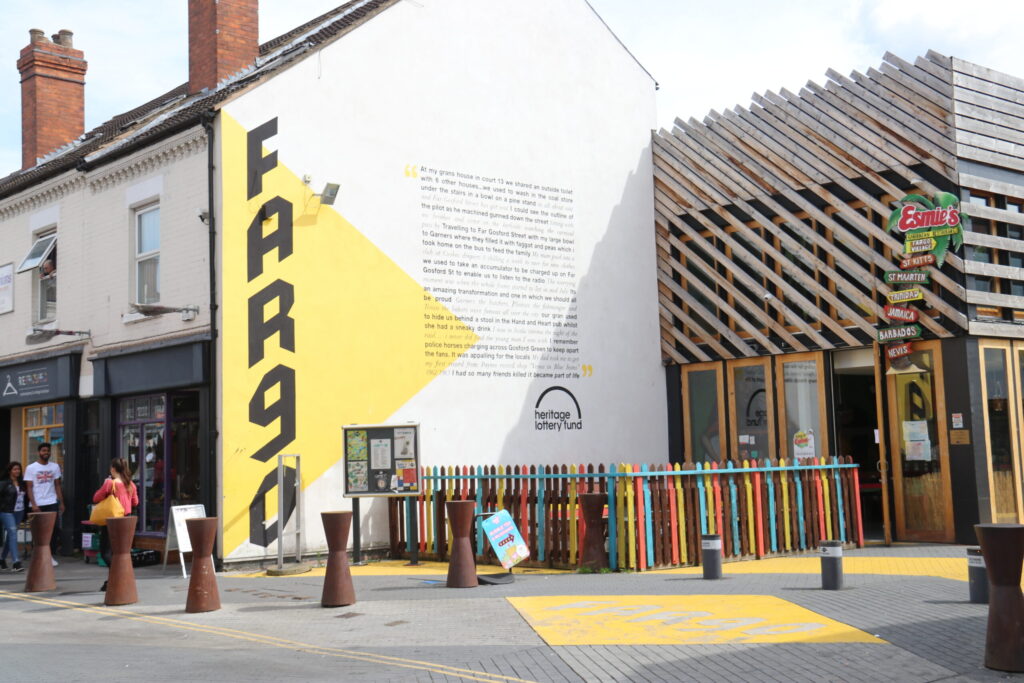
Today we have the final episode of Peter Walter’s series of lockdown walks “being a compendium of idle facts, hidden places and meaningless historiana gathered on walks within easy striding distance of the writer’s abode – and beyond”.
It’s a sign of the times that bicycle pioneer James Starley might well have approved of. The concrete nonentity of a building that bore his name on Cox Street has been flattened and is giving way to Starley Gardens, opening up views of Coventry’s cathedrals not seen since 1963.

These days Coventry University is looking to use a greener palate on the vast canvas of city centre it controls. And further along Gosford Street, beyond the Ring Road, its grounds staff have created another garden, complete with a Blooms for Bees planting scheme to tempt some of this country’s twenty-five species of bumble bees to call in for a drink.
It’s an attractive, flowery corner of student land still overlooked by big buildings, from the clustered towers of Arundel House, student living in the clouds, to the red brick bulk of the William Morris building, a First World War munitions factory that went up so fast that its workforce used to joke that management added an extra storey every night.
Further on, where the River Sherbourne comes up for air after its subterranean wanderings beneath the city centre, medieval Coventry suddenly re-surfaces with it. The fourteenth-century Gosford Gate and the two bridges named Dover and Calais may exist now only in wall plaques, but in the mud just outside the city wall archaeologists recently found a horde of coins dating back to Edwards one and two, while a whole range of timber-framed buildings running up the hill announces the start of the Far Gosford Street reclamation scheme.
Impressively, there are ‘new’ medieval buildings on this street now, rescued from the grime of later times, and they have a new type of tenant too. One is a homestyle Chinese dumpling takeaway, another is one of thirteen barbers’ shops that Far Gosford Street now sustains. On a street once known city-wide for its drinking houses, sadly the pub trade hasn’t fared so well. There’s only one still pulling pints, although the creative quarter that is Fargo does have a brewery tap amongst the Twisted Barrel Brewery’s gleaming steel vats.


Fargo, most of it built as a car radiator factory in 1904, has been a witness to the last hundred years of local memories, and some of the most compelling feature on a giant memory board located close to the entrance. There’s even a reference to conflict on Gosford Green, not King Richard II’s duel that never was, as it happens, but the battles between rival football fans heading for Highfield Road, with police on horseback charging about like knights on a medieval battlefield.
It’s much quieter now, but the continuing ability of football to raise such passions is evident on a peeling notice from January 2015, still stuck to a wall on the edge of Sky Blue Way. Enough is enough, it declares, calling for a mass protest at the Ricoh. Let’s show a red card to Sisu, it adds. Seems almost polite by comparison.
